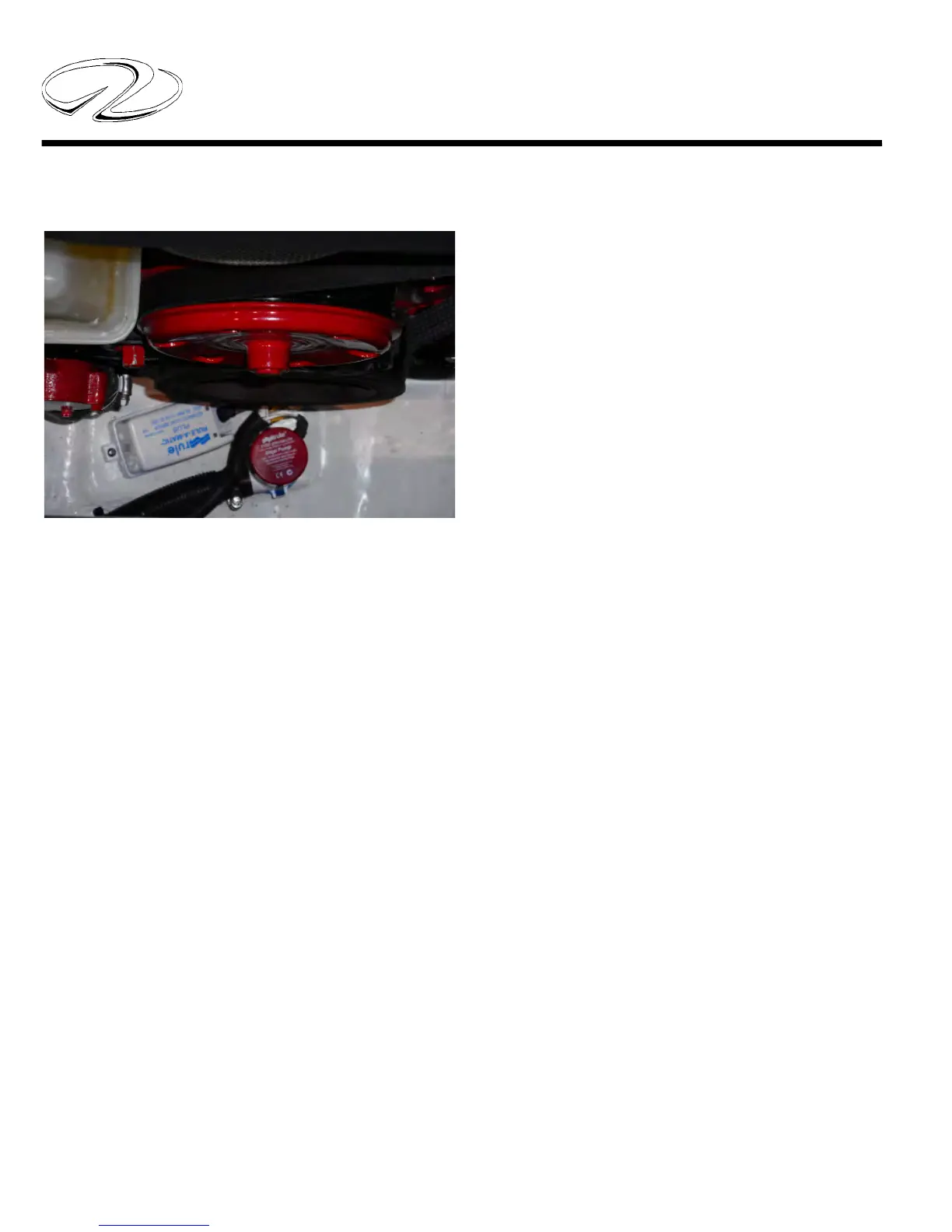2
Chapter 8
Check the transom area for loose hardware. Do not use
any ammable products in the bilge. Use environmentally
approved procedures to dispose of oily or soiled cloths.
BILGE/ENGINE COMPARTMENT
Always keep the bilge pumped out and free of accumula
ted
debris. If oil accumulates on the engine compartment
oor becomes it is usually related to engine oil lines, a
loose component such as an oil lter, oil pan drain bolt
or a leaky gasket/O-ring. Always nd the cause of smaller
problems before they become larger more expensive ones.
e engine compartment, bilge or sometimes called
the sump features a light colored gel nish that will be
bene cial in nding leak sources.
A periodic bilge cleaning with a brush and bilge cleaner
(purchase at a marina or supplier) will be helpful in
maintaining an orderly and safe bilge since accumulated
dirt and uids could cause someone to fall. Do not pump
bilge contaminated oil overboard but deploy it to a waste
receptacle for recycling. Check the fuel system annually
including all hoses, tanks and connectors for possible
leaks and deterioration. A stained area normally could
suggest a hose or connection leak.
Inspect all wiring including connectors and hangers for
tightness. Clean fuel lters as suggested by the engine
manufacturer.
Check all engine and water/waste hoses for tightness and
deterioration. Tighten all hose clamps as needed.
Check all battery hardware and terminal connections. Fill
the battery cells with distilled water (wet-cell type only)
to the battery manufacturer’s suggested level.
